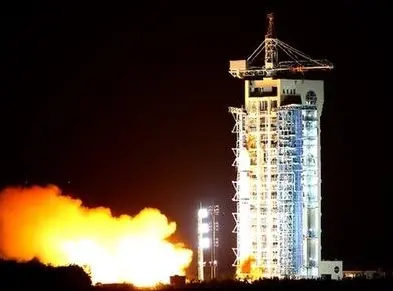SpaceX on Wednesday launched a rocket that had already flown to space and landed it successfully on an ocean platform, as part of its ongoing effort to recycle costly rocket components.
On a clear autumn evening at 6:53 p.m. (22:53 GMT), the tall, white Falcon 9 rocket blasted off from Cape Canaveral, Florida carrying the Echostar 105/SES-11 satellite.
"Couldn't be more perfect weather for a launch," said a commentator on SpaceX's live webcast.
The satellite aims to provide television coverage and communications capabilities to North America, Hawaii, Mexico and the Caribbean.
It is a "dual-mission" satellite for the US-based operator EchoStar and Luxembourg-based operator SES.
About 10 minutes after the launch, the tall portion of the rocket, known as the first stage, returned to Earth for a controlled, upright landing on a droneship called "Of Course I Still Love You," stationed in the Atlantic.
The Falcon 9 rocket "is currently standing on the deck," said the SpaceX commentator, as video images showed the smoking rocket securely parked on the platform.
"Yet another successful landing of a Falcon 9 first stage," he added.
"This is our 18th successful landing."
The first stage of a two-stage SpaceX Falcon 9 rocket sits on the deck of a robotic “drone ship” in the Atlantic Ocean on Oct. 11, 2017, shortly after helping launch the EchoStar 105/SES-11 communications satellite to orbit. /SpaceX Photo
The Falcon 9's first stage which launched Wednesday had previously flown on a cargo mission to the International Space Station in February.
SpaceX flew a recycled rocket component for the first time in March of this year.
Wednesday's launch was its "third successful mission with a flight-proven orbital class rocket," SpaceX said on Twitter.
The effort is part of CEO Elon Musk's broader vision of making spaceflight more affordable and enabling easier, more economical rocket travel, both from city to city on Earth and eventually to deep space.
(AFP)
 简体中文
简体中文



